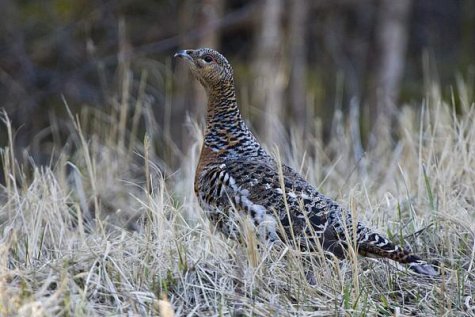VIDEOD: Capercaillie autumn
Video recorded by Ahto Täpsi
Photo Arne Ader
Translation Liis
On forest roads they fill their craws with pebbles
Capercaillie Metsis or mõtus Tetrao urogallus
From early October we can again see capercaillies at their springtime display grounds. The autumn display of the capercaillie cocks is not very active and the hens do not even come to see it.
Capercaillies are not migratory birds and prefer to live the year round in their territories in old pine forests, near bogs. The large birds need considerable bare ground under the trees for taking off to fly. The cocks do not even have a camouflage plumage. In old forests the hens find an abundance of insects to feed their offspring.
In Estonia an 80-year-old pine forest is considered ready for felling. How many such pine forests have you seen in recent years? – so there is a conflict between economic interests and the habitat needs of capercaillies.
The winter food of capercailiies is pine needles but they look for food on the ground until snow comes.
On the mainland capercaillies can be found in large forests, in the islands they have disappeared by now. Breeding pairs are few, clearly less than 2000. Only the hen incubates the eggs and cares for the offspring. Enemies of ground nesting birds are foxes as well as raccoon dogs, also wild boars and larger birds of preys – due to the increase in their numbers an increase of capercaillies suffers.
The large, gorgeous cocks are between three-quarters of a metre and one metre long, the weight an impressive 4 to 6 kilo, wingspan more than a metre.
Capercaillie hen
The plumage of the hens is brown all the year, on the breast there is a large rust-coloured patch. The skin around the eyes of hens as well as cocks is naked. Length a little over half a metre, weight only around 2 kilos.
A protected species and in the case of capercaillies their habitats should be properly mapped because the protection of species has turned out to be easier when the numbers have not yet decreased to a critical limit .









